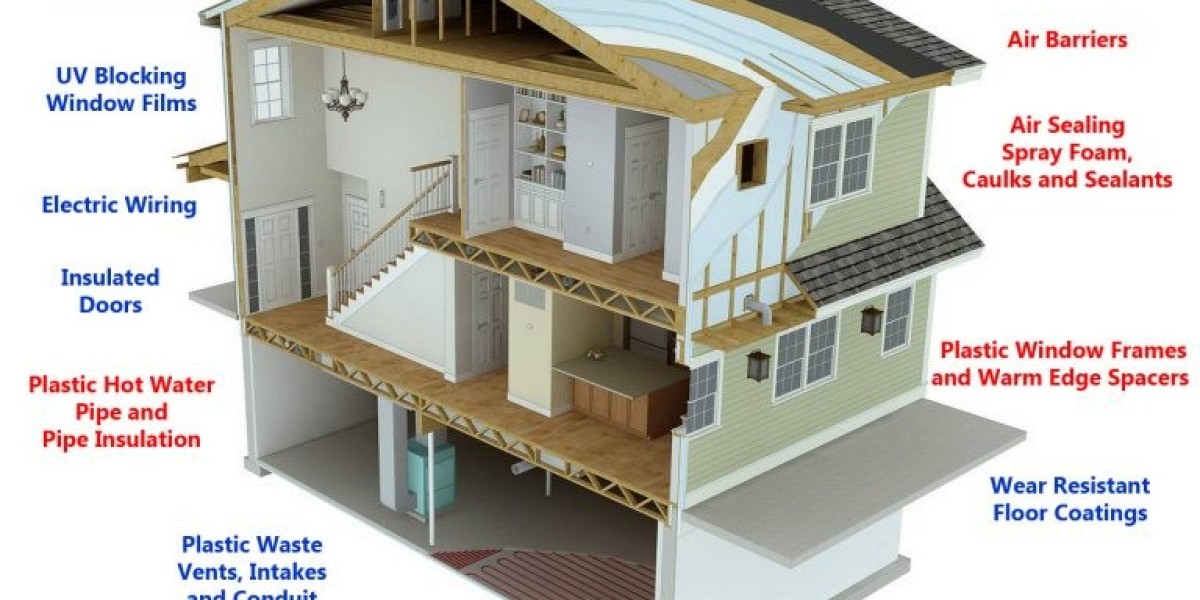The building envelope is the physical separator between the interior and exterior environments of a structure. It consists of various components that work together to provide thermal insulation, protect against moisture and air infiltration, and contribute to energy efficiency. A well-designed building envelope is crucial for maintaining a comfortable and sustainable indoor environment. In this article, we will explore the importance of a well-designed building envelope and discuss its various components, energy efficiency considerations, material choices, maintenance, and future trends.
Introduction to the Building Envelope:
When we think of a building, we often focus on the interiors and aesthetics. However, the building envelope plays a vital role in ensuring the overall performance and efficiency of a structure. It acts as a protective barrier, shielding the occupants from the elements and regulating temperature and humidity levels. A poorly designed or compromised building envelope can lead to energy loss, discomfort, and moisture-related issues.
Importance of a Well-Designed Building Envelope:
A well-designed building envelope offers numerous benefits. Firstly, it helps in maintaining a comfortable indoor environment by preventing heat transfer, air leakage, and moisture intrusion. This, in turn, reduces the reliance on heating, ventilation, and air conditioning (HVAC) systems, leading to significant energy savings. Additionally, an efficient building envelope improves thermal comfort, reduces noise transmission, and enhances the overall durability of the structure.
Components of a Building Envelope:
The building envelope consists of several key components, each serving a specific purpose:
Roof:
The roof is one of the most critical parts of the building envelope. It protects the interior from weather conditions such as rain, snow, and extreme temperatures. Proper insulation and ventilation in the roof contribute to energy efficiency and prevent moisture-related issues.
Walls:
Walls provide structural support and act as a barrier against external elements. They also contribute to the aesthetics of the building. Insulation, moisture barriers, and proper sealing are essential in walls to minimize heat loss and prevent water intrusion.
Windows and Doors:
Windows and doors not only allow natural light and ventilation but also influence the energy efficiency of a building. Energy-efficient glazing, weather-stripping, and proper installation techniques are crucial for minimizing heat gain or loss through these openings.
Insulation:
Insulation is a key component of the building envelope, helping to regulate temperature and reduce energy consumption. It is commonly installed in walls, roofs, and floors to limit heat transfer and maintain thermal comfort.
Air and Moisture Barriers:
Air and moisture barriers are designed to prevent air leakage and moisture infiltration into the building envelope. These barriers enhance energy efficiency, prevent mold growth, and ensure indoor air quality.
Role of the Building Envelope in Energy Efficiency:
The building envelope plays a significant role in the energy efficiency of a structure. By minimizing heat transfer through insulation, proper sealing, and high-performance windows, it reduces the need for excessive heating and cooling. This, in turn, leads to reduced energy consumption and lower utility bills.
A well-insulated building envelope prevents heat loss during colder months and heat gain during hotter months. Insulation materials such as fiberglass, cellulose, or spray foam help create a thermal barrier, minimizing the transfer of heat through walls, roofs, and floors. This insulation not only keeps the indoor temperature stable but also reduces the load on HVAC systems.
Proper sealing of the building envelope is crucial for preventing air leakage. Uncontrolled air infiltration can result in drafts, hot or cold spots, and an increased workload for HVAC systems. Sealing gaps, cracks, and joints in the building envelope using caulk, weather-stripping, or sealants helps maintain a more consistent indoor temperature and reduces energy waste.
High-performance windows and doors with energy-efficient glazing further contribute to the energy efficiency of the building envelope. Double or triple-pane windows with low-emissivity coatings and gas-filled chambers provide better insulation and reduce heat transfer. Additionally, windows with proper sealing and thermal breaks minimize air leakage and improve overall energy performance.
Increased Property Value:
Investing in a well-designed building envelope can increase the overall value of the property. Energy-efficient buildings with optimized thermal performance and improved indoor air quality are highly sought after in the real estate market. Potential buyers or tenants appreciate the long-term cost savings, comfort, and sustainability benefits associated with a well-designed building envelope.
Conclusion:
The building envelope plays a crucial role in ensuring energy efficiency, comfort, and sustainability in buildings. From insulation and air sealing to natural lighting and ventilation strategies, each aspect of the building envelope contributes to creating a high-performance structure. By choosing sustainable materials, optimizing thermal performance, and considering indoor air quality, we can create buildings that are not only energy-efficient but also provide a healthy and comfortable living or working environment. Investing in a well-designed building envelope not only benefits occupants through cost savings and improved comfort but also contributes to a greener and more sustainable future.








